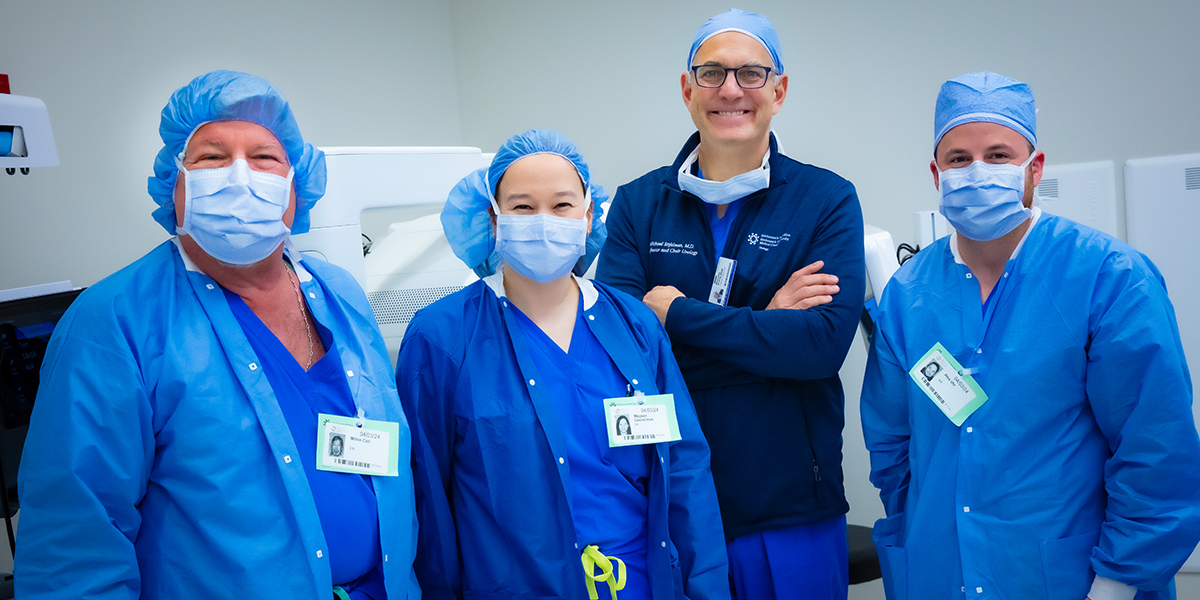Hackensack University Medical Center Urologists Make Key Presentations at AUA 2024 Annual Meeting
Presentations feature IRIS modeling software, single-port surgery advantage and STEAP3 gene factors in renal cancer

Urologists from Hackensack University Medical Center presented significant findings at the American Urological Association’s 2024 Annual Meeting related to surgical outcomes, renal cancer genetic factors and surgical imaging technology.
The presentation Single-Port Surgery Delivers Improved Cosmesis Compared to Multi-port Surgery Regardless of Incision Site explored improved cosmesis in single-port (SP) robotic surgery compared to multi-port (MP) robotic surgery is improved. Previously, the only urology patient study of this premise did not assess differences by incision site. This study evaluated SP, MP, incision location, age, gender and prior abdominal surgery as predictors of cosmesis and scar consciousness and confirmed that SP does indeed have better patient-reported cosmetic outcomes compared to MP, especially among younger patients, and are unaffected by incision location.
Results presented in Allele-Specific DNA Methylation Affecting the STEAP3 Gene in Renal Cell Carcinomas showed that recurrent gains of methylation in the STEAP3-C2orf76 intergenic insulator in ccRCCs, preferentially affecting the rs1530562 ALT allele, have implications for new treatment approaches targeting ferroptosis. The findings also suggest further study of the GWAS signal for ccRCC in the STEAP3 gene is warranted, with ASM mapping helping to pinpoint candidate functional SNPs.
Hackensack University Medical Center physicians also contributed to A Multi-Institutional, Prospective Comparative Study Evaluating the Clinical Utility of IRIS, an Anatomical Modeling Software for Preoperative Surgical Planning and Intra-Operative Navigation during Robot Assisted Partial Nephrectomy (RAPN). The multi-center team evaluated the clinical utility and impact of IRIS compared to standard CT scan alone for preoperative surgical planning and intraoperative navigation during RAPN. The study found IRIS improved self-reported confidence, efficiency and complex anatomical interpretation, especially during complex cases with increased implementation of non-global ischemia approaches, despite minimal difference in clinical outcomes.
Learn more about our urological care innovations.

